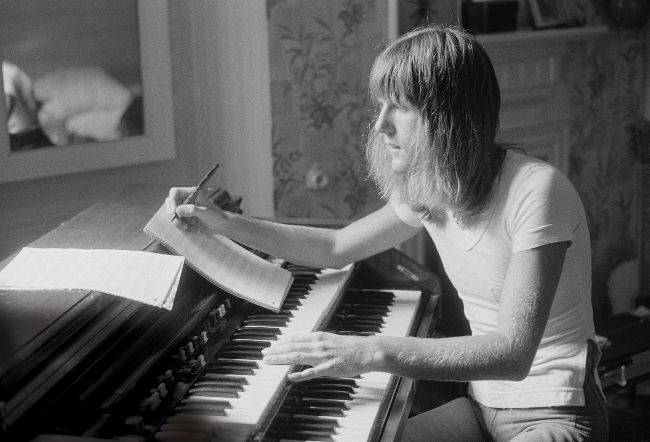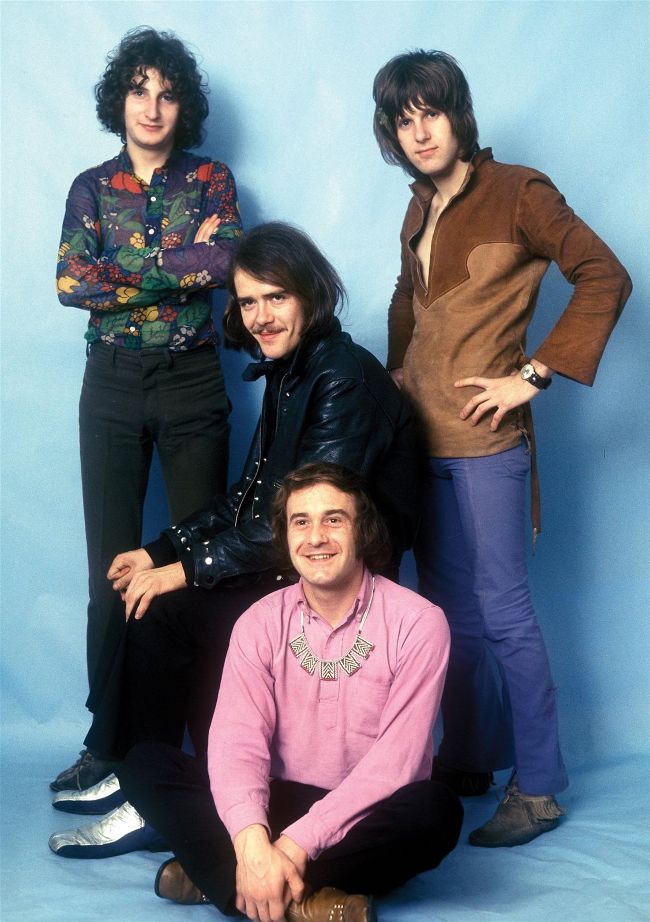The Talented Mr Emerson
A remarkable composer, arranger and virtuoso with a ruthless disdain for the wellbeing of the Hammond organs that became part of his signature sound, Keith Emerson built the foundations upon which progressive rock stands to this day. With help from the good and great of prog rock and beyond, here are 30 classic cuts from the genius of the Moog.
Written and compiled by David West

The master of his art, working at home, September 4, 1971.
Image: Michael Putland/Getty Images
It was Pablo Picasso who once said, “Learn the rules like a pro, so you can break them like an artist.” Keith Emerson’s extraordinary career offers a case study in the elegant expression of Picasso’s credo. Across six decades, Emerson tore down barriers between genres, he redefined the image of the keyboard player through his wild onstage performances and played a pivotal role in the meteoric rise of progressive rock from small British clubs like The Marquee to massive American arena tours.
Proving Picasso’s maxim, Emerson wasn’t a product of the self-indulgent free jazz movement of the 1960s that rejected notions about mastering the craft before attempting to make art. As a precociously talented young pianist, Emerson was versed in boogie-woogie, jazz and blues; he could play classical pieces and songs from the musical theatre repertoire with equal fluency, or turn his hands to soul and rhythm and blues, skills that led to his first break in the music business when he formed The Nice to back up the former member of the Ikettes, soul singer PP Arnold. Emerson took all these disparate styles and projected them through the prism of his own restless imagination to push rock music far beyond its blues-based origins, mixing psychedelia, classical, and jazz together to create something entirely original: progressive rock.
Beginning in The Nice years, Emerson distinguished himself as a fearless arranger of other people’s compositions. He took Leonard Bernstein’s America from West Side Story, and blended it with Dvorak’s New World Symphony to reframe the music in a startling, new light. When The Nice came to an end, Emerson teamed up with Greg Lake from King Crimson and Carl Palmer of Atomic Rooster and The Crazy World Of Arthur Brown to form prog’s first supergroup. It was indicative of the acclaim already surrounding the three members that they simply named their new venture after its constituent parts. With Emerson, Lake & Palmer, the keyboardist continued to reimagine and rearrange songs from beyond rock’s repertoire, including works by Modest Mussorgsky, Béla Bartók, and Aaron Copland, presenting his interpretations with rock’n’roll showmanship and Emerson’s considerable flair for theatricality. While Bernstein had famously despised what The Nice did to America, Emerson received the blessing of Copland and Alberto Ginastera to interpret their works, as the composers recognised the seriousness of his intent. It was an approach that merrily crossed genres and demographics.
“Who says organ players can’t be flying, knifewielding, leathertrouser-wearing rock stars?”
Lynsey Ward
“Keith’s use of classical motifs and borrowed melodies might have seemed a little highbrow,” observes Ian Anderson, “but his leather biker jacket and the dagger used to stab his Hammond organ gave it all a macho touch, which endeared Keith to the biker fraternity in many countries.” ELP’s ambitions were apparent from the outset. Their second public appearance was in front of 600,000 people at the 1970 Isle Of Wight Festival, where their performance included firing a pair of cannons. The trio were a sensation, undertaking massive tours across the US, travelling in a convoy of trucks with the three stars’ names proudly displayed on the roofs of the trailers. Memorably captured on Welcome Back My Friends To The Show That Never Ends…, ELP were a riotous onslaught of sound and fury onstage. But as the members’ individual musical predilections pulled them in opposing directions even as the band struggled with the costs of touring their lavish productions, ELP split up for the first but not the last time in 1979.
In the 1980s, Emerson began composing film soundtracks, including the Sylvester Stallone action thriller Nighthawks, and a pair of Italian horror movies – Inferno by Dario Argento, and Michele Soavi’s The Church. In the new millennium, Emerson scored music for the king of the monsters in Ryuhei Kitamura’s Godzilla: Final Wars. He reunited with Greg Lake for a tour in 2010 that was captured on Live From Manticore Hall, before reassembling ELP with Carl Palmer for what proved to be their final performance at London’s High Voltage Festival in July 2010.
Where his early work was marked by that blend of formidable ability and onstage flamboyance, the last chapter of Emerson’s career shone the spotlight on his talents as a musician of accomplishment and depth. He released an album of solo piano performances called Emerson Plays Emerson and realised his orchestral ambitions with 2012’s The Three Fates Project, wherein he combined The Keith Emerson Band with the Münchner Rundfunkorchester conducted by Terje Mikkelsen.

The Nice (clockwise from top left): Davy O’List, Keith Emerson, Brian Davison, Lee Jackson.
AVALON
“I feel that Keith always wanted to work with orchestras and to be a composer more than a performer. And he was never given a real chance to do that,” says Mikkelsen. “I’ve played with some of the top soloists in the world and when they hear I worked with Keith Emerson, [they say] ‘Oh! He’s the reason I started to like classical music!’”
Here, 30 of Emerson’s fans, friends and family celebrate a musical marvel whose artistry couldn’t be bound by genres, rules or expectations.